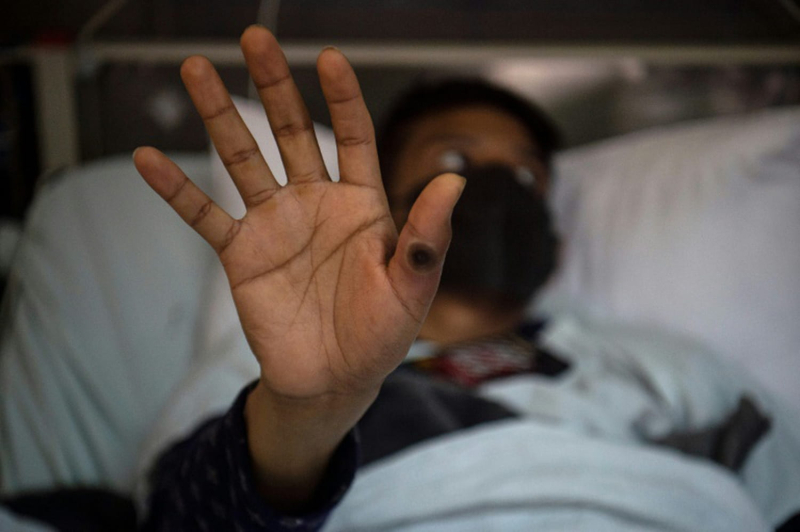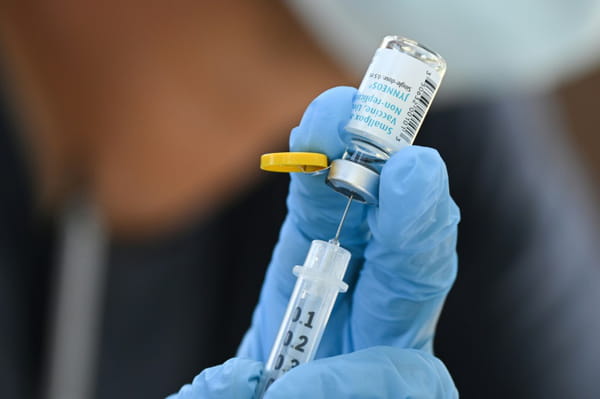The mpox epidemic, including a first cases of a more contagious and dangerous variant have been reported Thursday outside Africa, has left at least 548 dead since the beginning of the year in the Democratic Republic of Congo (DRC), the country more affected by the disease. The World Health Organization (WHO) on Wednesday raised its highest level of alert internationally in the face of a resurgence of cases of mpox on the African continent. A total of 38,465 cases of the disease, formerly known as monkeypox, have been reported in 16 African countries since January 2022, resulting in 1,456 deaths, including a 160% increase in the number of cases in 2024 compared to the previous year, according to data released last week by the African Union's health agency, Africa CDC. And on Thursday, the Swedish Public Health Agency announced that a person living in the Stockholm region had been diagnosed with the more contagious and dangerous clade 1 subtype of the mpox virus, a first outside from Africa. “The affected person was infected during a stay in a region of Africa where there is a major outbreak of MPOX subtype clade 1,” Olivia Wigzell, the acting head of the Swedish agency, explained during a press conference. The agency assured in a press release that the fact that “one person is treated for MPOX in the country does not imply a risk for the rest of the population.” The European Centre for Disease Prevention and Control (ECDC) considers, for the time being, this risk to be very low, it added. The agency specified to AFP in a message that it was the MPOX variant of the subtype clade 1b, which has been experiencing a resurgence in the DRC since September 2023. In this country of around 100 million inhabitants, all provinces are now affected by the epidemic. According to the latest epidemiological report, “our country has recorded 15,664 potential cases and 548 deaths since the beginning of the year,” Congolese Minister of Health Samuel-Roger Kamba said on Thursday. As of August 3, Africa CDC had recorded 455 deaths and 14,479 infections in 25 of the 26 provinces of the DRC. The provinces of South Kivu, North Kivu, Tshopo (east), Equateur, North Ubangi, Tshuapa, Mongala (north) and Sankuru (center) are the most affected, according to the minister. Through international mobilization, “we are activating all the necessary mechanisms to identify and treat cases” free of charge, Mr. Kamba stressed. – More dangerous virus – According to a statement from the US Department of Health released Wednesday, “vaccination will be a critical part of the response to this outbreak. To support this effort, the United States is donating 50,000 doses of the Food and Drug Administration (FDA)-approved Jynneos vaccine to the DRC.” The Danish pharmaceutical company Bavarian Nordic, whose stock jumped on the stock market on Thursday, said it was ready to produce up to 10 million doses of vaccine by 2025. A vial of the Jynneos mpox vaccine on August 9, 2022 in Los Angeles, California © AFP – Patrick T. FALLON Mpox is a viral disease that spreads from animals to humans but is also transmitted through close physical contact with a person infected with the virus. In 2022, a global epidemic, carried by clade 2, had spread to around a hundred countries where the disease was not endemic, mainly affecting homosexual and bisexual men. The epidemic had caused some 140 deaths out of around 90,000 cases. The current epidemic, which started in the DRC, has its specificities, first and foremost a more contagious and dangerous virus. It is caused by clade 1 and by an even more dangerous variant, clade 1b. Its mortality rate is estimated at 3.6%. Clade 1b causes rashes to appear all over the body, whereas previous strains were characterized by rashes and localized lesions, on the mouth, face or genitals. Mpox was first diagnosed in humans in 1970 in what is now the DRC (formerly Zaire), with the spread of the subtype clade 1 (whose new variant is a mutation), mainly limited since then to countries in western and central Africa, with patients generally being contaminated by infected animals. All reproduction and representation rights reserved. © (2024) Agence France-Presse


